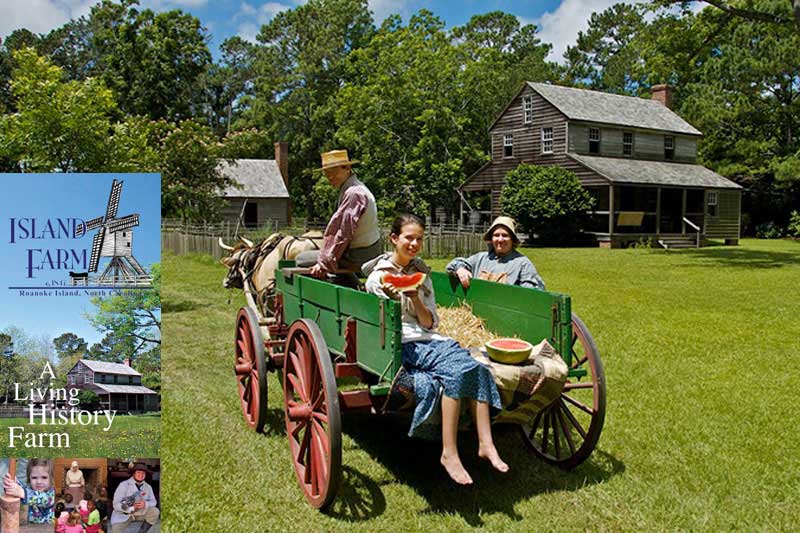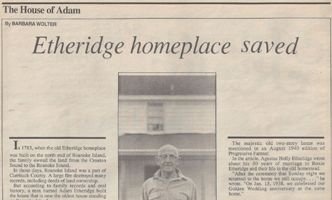Project Galleries - Historic Restoration Project Details
Being a part of the "Etheridge Homeplace", this house on Roanoke Island is located approximately 2 miles northwest of downtown Manteo. The site surrounding the house is considered to be part of a 150 acre tract acquired by Jessie Etheridge in January 1783.
Outer Banks Conservationists, Inc. hired Calvin Gibbs´s company in 1999-2000 to restore the nineteenth-century farmhouse, ca. 1840-1850, back to its original form.

Ethridge Homeplace (circa 1988)
Calvin and his team had been contracted a decade earlier to undergo restoration work on the structure. John F. Wilson IV, a sixth generation Etheridge, and others had purchased the structure. Wilson, an architect and avid historian, had contracted Calvin Gibbs on previous local restoration projects and again chose him for this project.
John Wilson was quoted in an article from a local March 1988 publication as describing Calvin as "a young carpenter with the skills of the old masters.”.
During that project, Gibbs and others removed the old front porch and constructed a replacement porch to mirror the old dilapidated one.

Ethridge Homeplace Rear Before (circa 1999)

Ethridge Homeplace Rear Before (circa 1999) , Manteo, NC
To restore the house to its 1800's state, the additions that were added on over the years were removed.
The house was originally built with mortice and tenon. The corners of the house are 4-by-4 planks that stretch from floor to rafters. To support the floorboards, a hole is cut in the planks and the floor board is run through and stabilized with wooden pegs.

during restoration
The OBC added the “Island Farm” project to its nonprofit work to create a historical site to interpret daily life on Roanoke Island in the mid-1800’s. The Etheridge farmstead is the centerpiece of the site.
In addition to the restoration of the homeplace, they also built several of the outbuildings and visitor center for the Island Farm site.

The nineteenth-century farmhouse, ca. 1840-1850, restored back to its original form (rear)

The nineteenth-century farmhouse, ca. 1840-1850, restored back to its original form (front)







